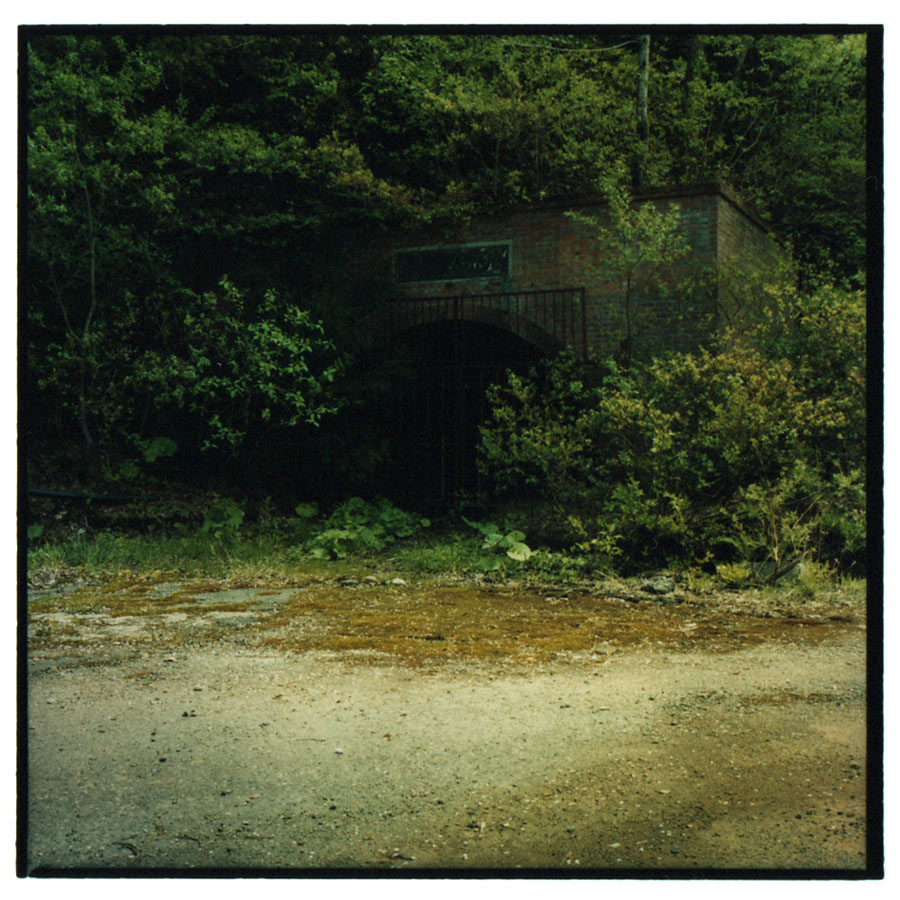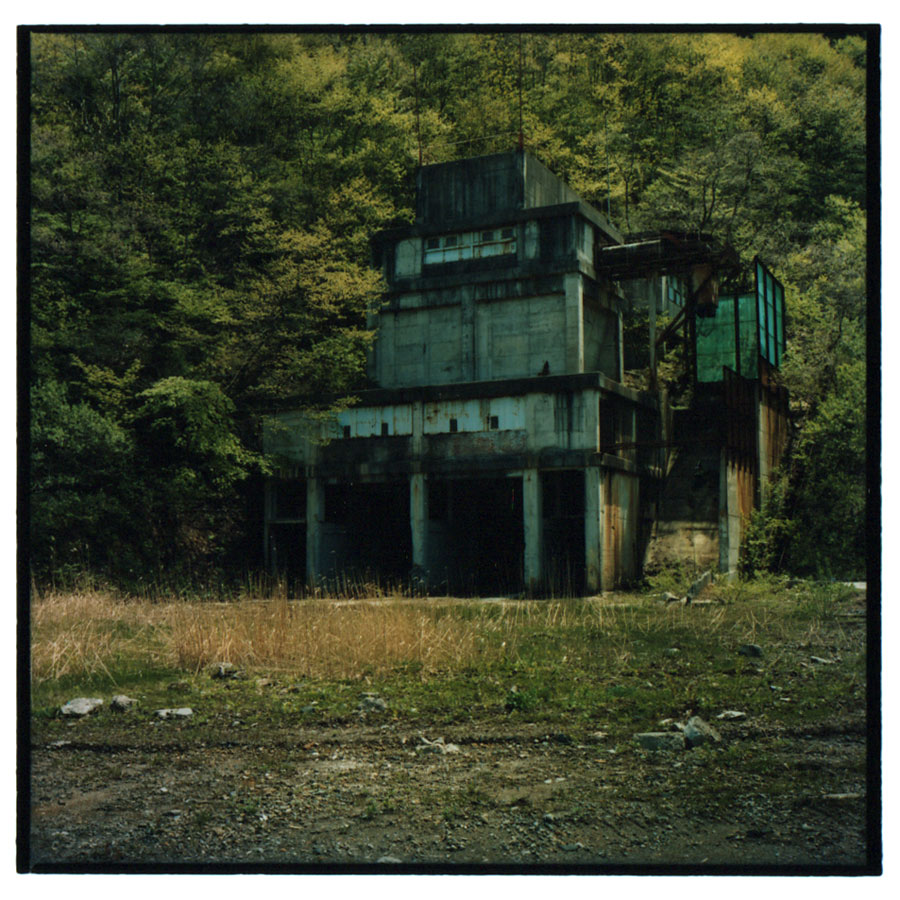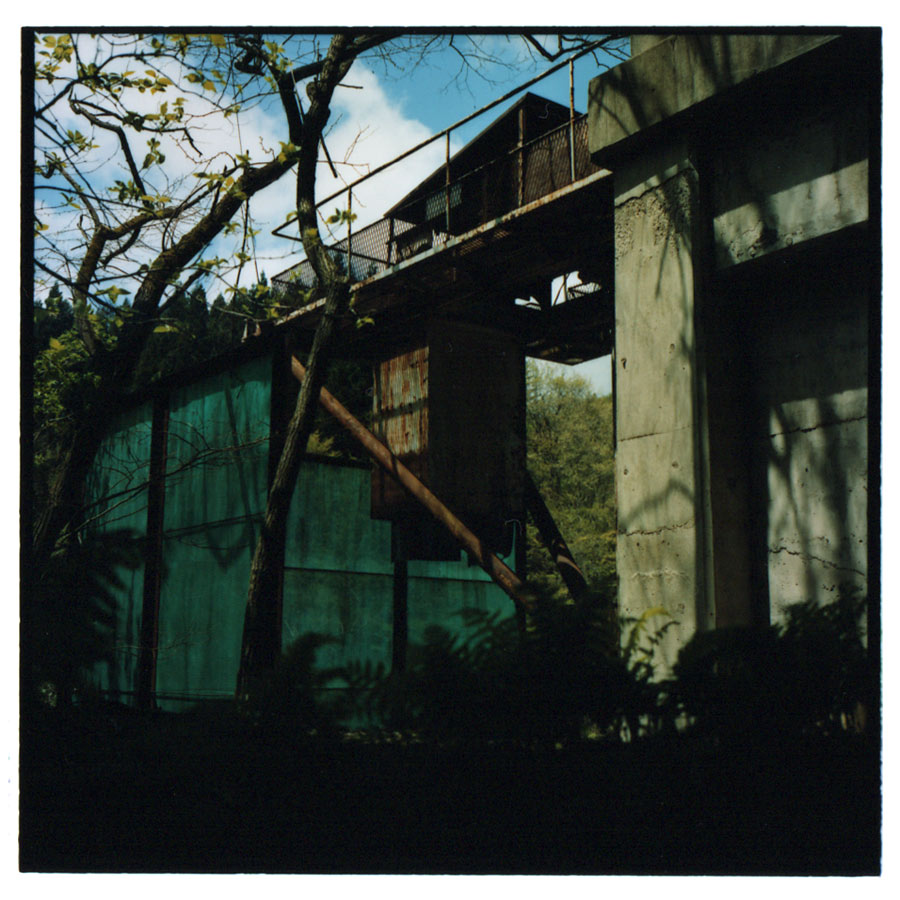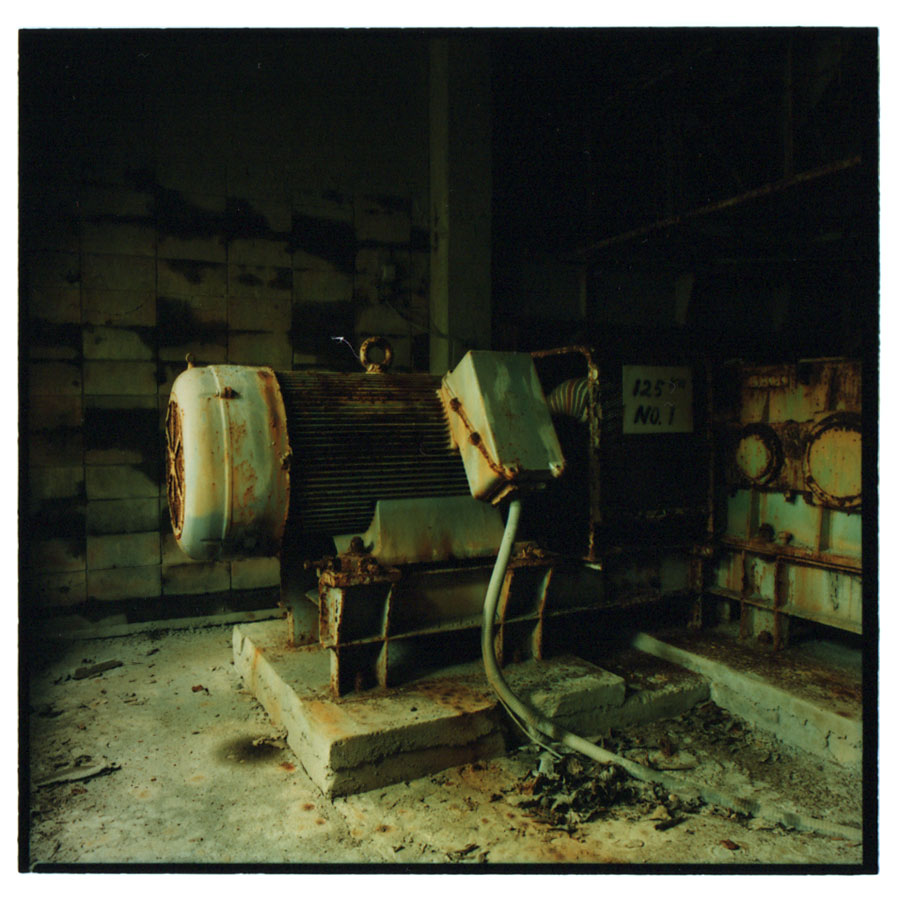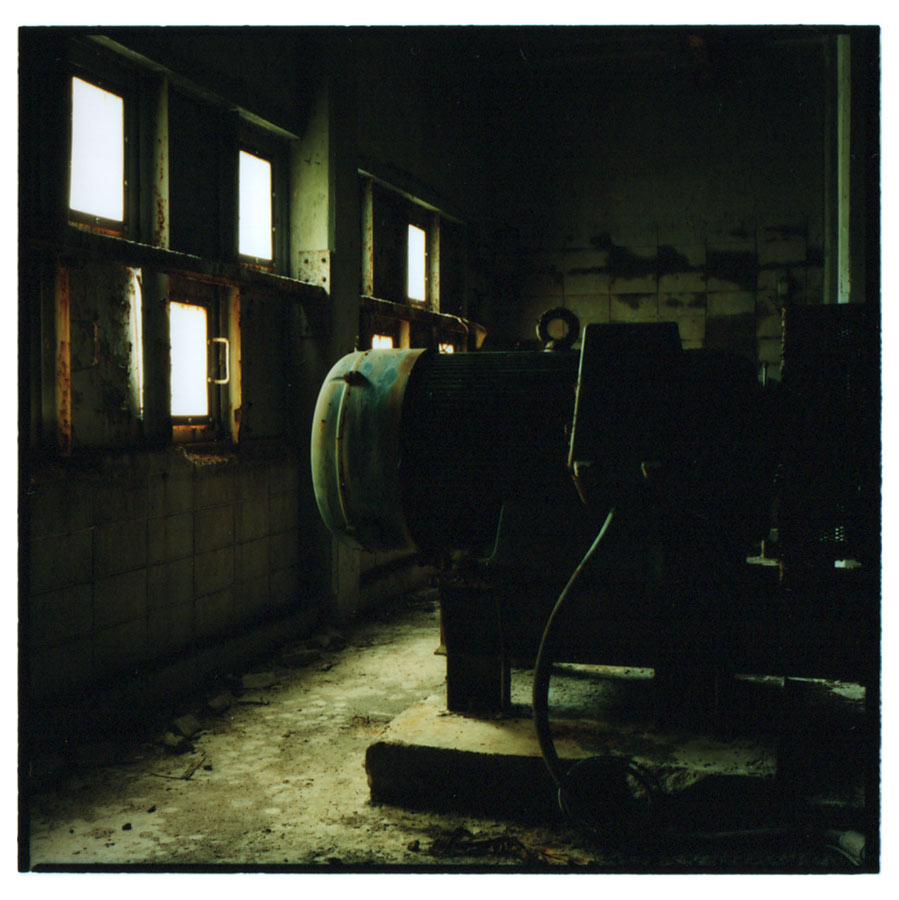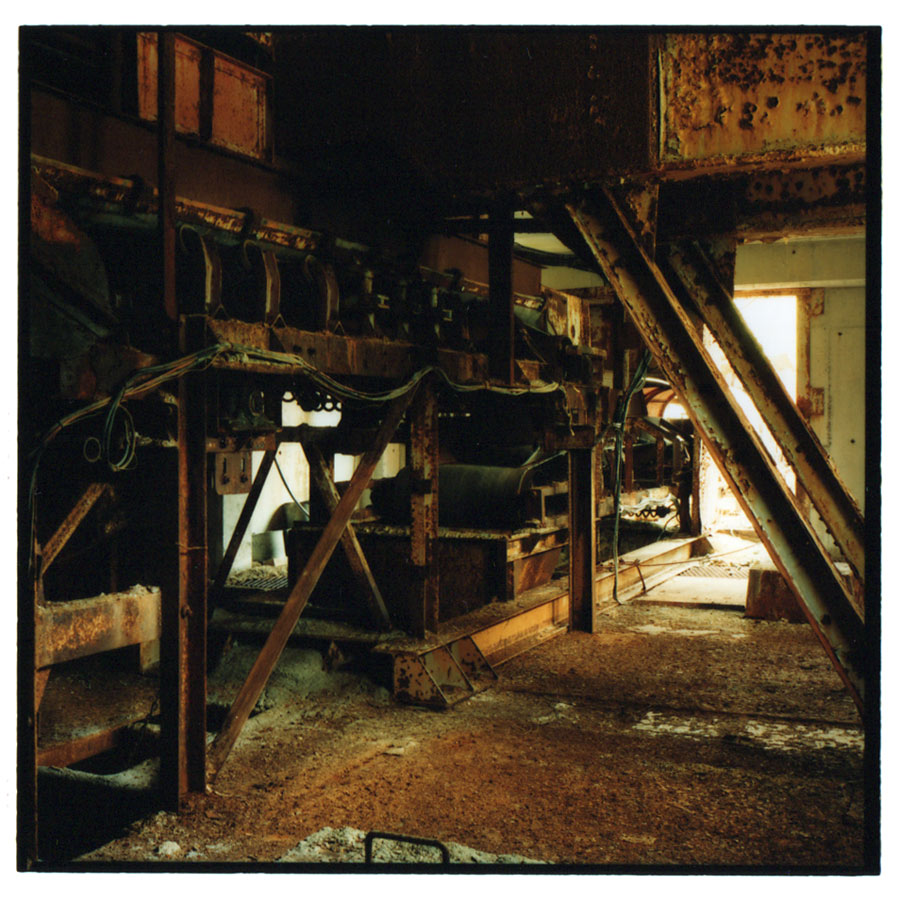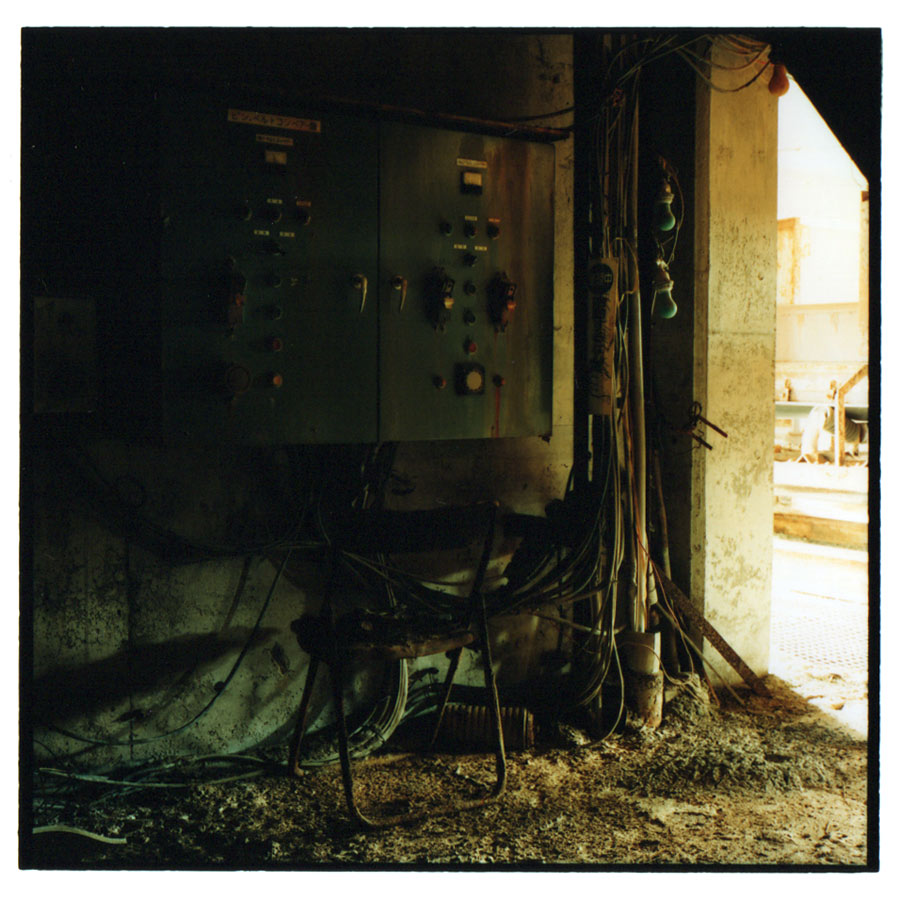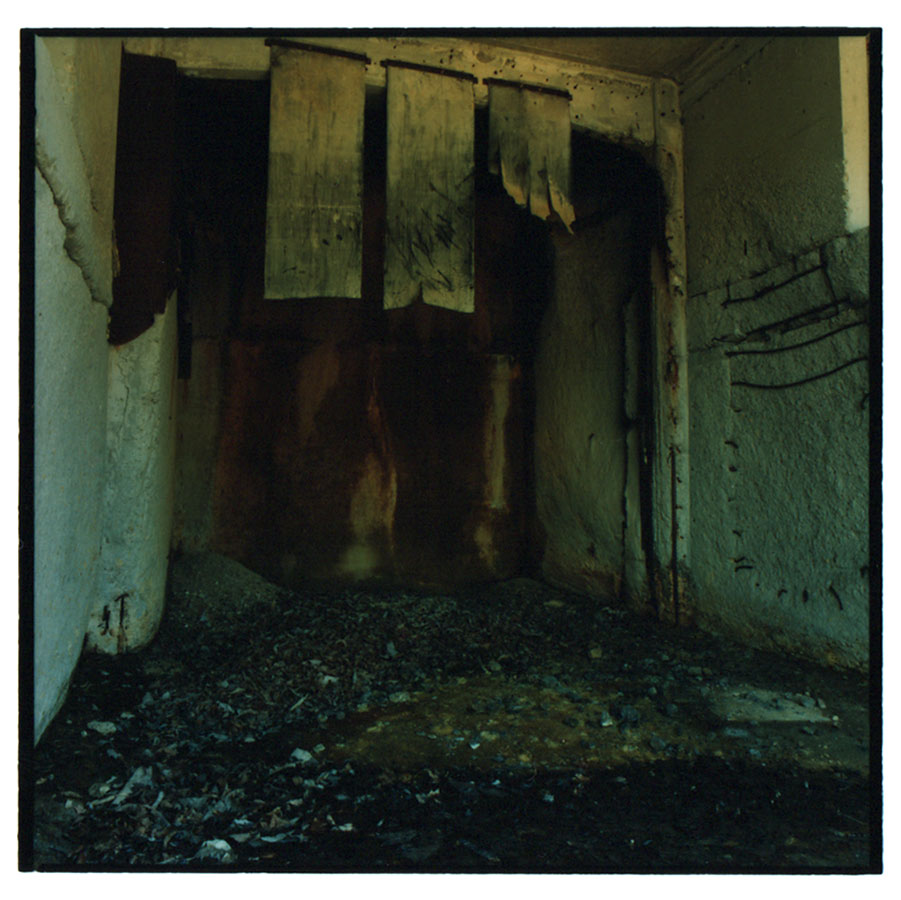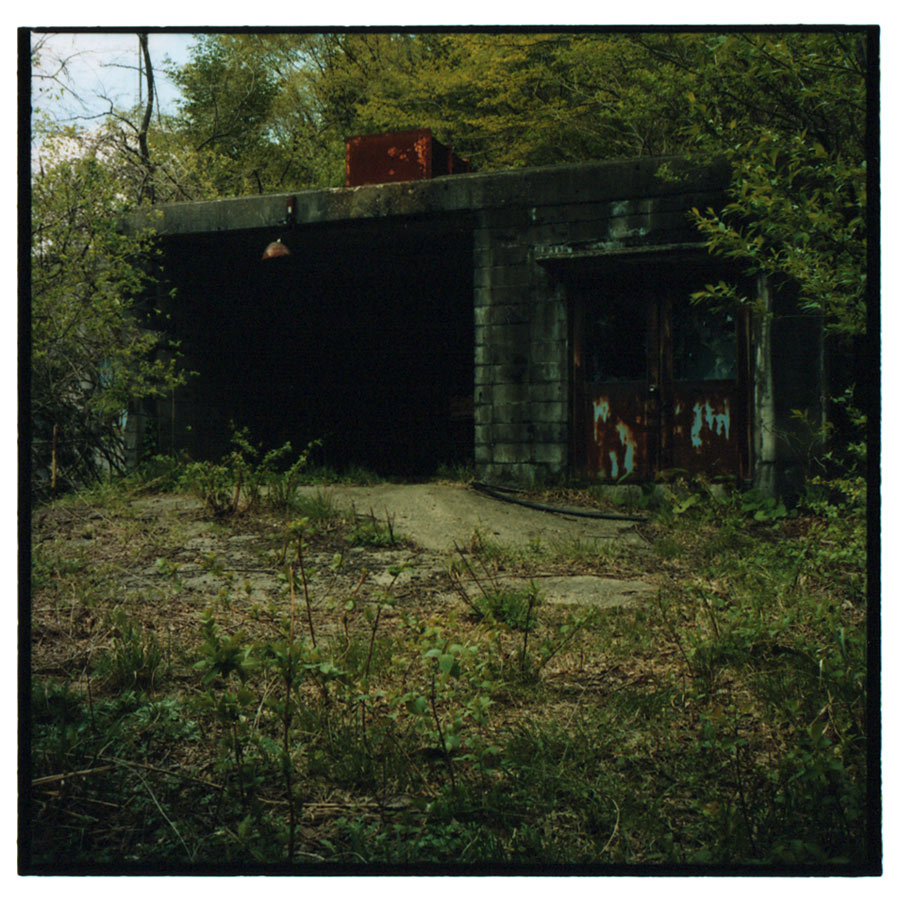深沢鉱山跡
黒鉱鉱床が密集する県の北東部、北鹿地域の急峻な山間に位置し、黒鉱を産出して栄えました。 黒鉱は金や銀などの様々な有用金属を微細な粒子状に含む黒色の複雑硫化鉱であり、1861 年(文久元年)の旧小坂村における発見が起源とされます。 当時は泥状や砂状に風化した土鉱から銀が回収されましたが、1902 年(明治 35 年)の藤田組(後の同和鉱業)による黒鉱自熔製錬法の確立を契機に次第に産状の解明が進み、20 世紀の半ばから各地で新鉱床の発見が相次ぎました。 同和鉱業は小坂、花岡鉱床の解析をもとに探鉱を進めて 1969 年(昭和 44 年)に深沢鉱床を発見し、無軌道のトラックレス方式を採用した開発に着手しました。 1973 年(昭和 48 年)に合計延長 4,565 m に及ぶ 2 本の斜坑が完成し、その一方はトラック斜坑として人員の輸送や資材の運搬に、他方はコンベア斜坑として鉱石の運搬に用いられました。 同年に花岡鉱山の支山として操業が開始され、後に新鉱体の開発や坑内車両の大型化、無線通信システムの導入によって増産が図られます。 周囲に住環境は整備されず、従業員は花岡から専用バスを用いて往復しました。 昭和末期に入ると同和鉱業は円高の影響を受けて操業規模の縮小を余儀なくされ、1986 年(昭和 61 年)に花岡鉱業を設立して深沢の経営を移しました。 しかし、後に非鉄金属市況の低迷や資源の枯渇から深沢は松峰、温川鉱山とともに閉鎖され、国内の黒鉱鉱山は姿を消すこととなります。 総出鉱量は 470 万 t に上り、開発当初 62 名を数えた従業員数は 1975 年(昭和 50 年)に 138 名に達しました。 周辺にはトラック斜坑に隣接して、コンベア斜坑の貯鉱舎兼駆動室跡が今も残ります。
1994 年閉山
Fukasawa Mine
The mine was situated in steep mountains in the Hokuroku area and produced black ore. The Hokuroku in the northeastern part of the prefecture was known as a region rich in black ore deposits. The black ore, called "Kuroko", is a complex sulfide ore containing valuable metals, such as gold and silver. The discovery of the ore was made in former Kosaka Village in 1861. At that time, silver was obtained from muddy or sandy ore called "Earthy Ore". Fujita Gumi, later Dowa Mining Co., Ltd., developed black ore flash smelting method in 1902. As research on black ore deposits and its distribution proceeded, new ore deposits were discovered one after another from the middle of the 20th century. Dowa Mining Co., Ltd. engaged in mineral exploration, based on geological information of the known black ore deposits of Kosaka and Hanaoka mines, discovering Fukasawa Deposits in 1969. The company completed the construction of two parallel inclined shafts with a trackless transportation system in 1973, and their total length reached 4,565 meters. One of the shafts, called "Truck Shaft", was used for miner and equipment transportation, while the other, called "Conveyor Shaft", was used for ore and waste haulage. Fukasawa Mine commenced operations as part of Hanaoka Mine in the same year. After that, production increased due to the development of new ore bodies, increasing size of mining vehicles and trucks, and the introduction of an underground radio communication system. No housing was provided around the mine, and dedicated buses shuttled employees between the mine and Hanaoka. The strong yen led the company to a reduction in the scale of operation in the late 20th century. As a result, newly formed Hanaoka Mine Co., Ltd. took over the management of the mine in 1986. Later, the mine was closed along with Matsumine and Nurukawa mines due to a slump in the nonferrous metals market and resource depletion, resulting in the disappearance of all black ore mines in Japan. The mine produced 4.70 million tonnes of ore until its closure, and the number of employees increased from 62 at the beginning to 138 in 1975. The remains of a conveyor drive house at the Conveyor Shaft still stand adjacent to the Truck Shaft.
closure in 1994
秋田県大館市雪沢
銅、鉛、亜鉛、硫化鉄、金、銀、重晶石
Yukisawa, Odate City, Akita
copper, lead, zinc, pyrite, gold, silver, barite
